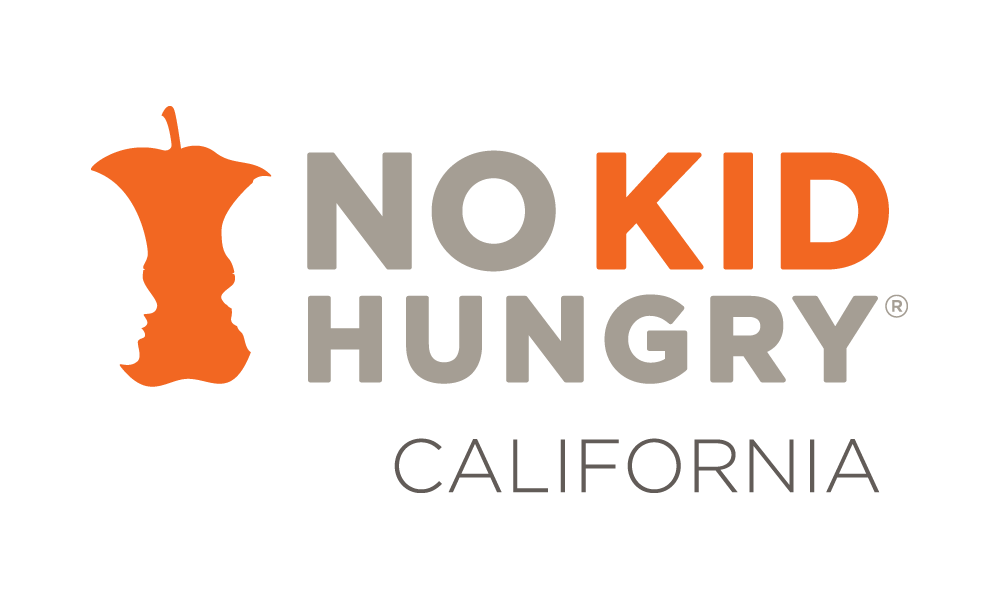“Sometimes, what will make a bigger impact in the community at the end of the day, is some out-of-the-box thinking.” – Maria Fuentes, manager of Every Child, Every Day
Summer is the hungriest time of the year for millions of children who rely on school meals.
According to the latest U.S. Census data, 10 million children live in poverty, with the child poverty rate increasing to 13.7% in 2023 from 5.2% in 2021. This mirrors the latest figures from the USDA’s annual report on Household Food Security, which showed a similar uptick in child hunger. Nearly 14 million children, or 1 in 5, face food insecurity.
Thanks to years of advocacy efforts, Congress expanded a summer-long grocery benefit for kids, known as SUN Bucks in California. They also approved meal delivery options in rural areas, improving access to summer meals.
This summer, No Kid Hungry collaborated with school districts and community organizations across the U.S. to help close the hunger gap. With your support, we convened over 400 state and federal officials, community leaders and parents to share ideas and work together on ways to feed kids this summer. We also provided grants and technical support to schools and community organizations in California, which helped them purchase critical equipment, as well as hire and retain staff to run pick-up and meal delivery programs in rural areas.
The passionate team of staff and volunteers at the Redwood Empire Food Bank (REFB) in Sonoma County is a shining example of what you’ve helped us achieve.
No Kid Hungry California’s Senior Program Manager, Mariela Donis, sat down with REFB’s Maria Fuentes, manager of Every Child, Every Day, to reflect on how the first year of operating the rural summer feeding program went.

The Every Child, Every Day initiative is designed to end childhood hunger by addressing the nutritional needs of children of all ages and targeting seasonal meal gaps. Although REFB feeds kids and families year round with nutritious foods, summertime is the busiest and hungriest time for families.
“When there were the federal rules in place during the pandemic that allowed families to take home school meals, we had a huge spike, serving about 150,000 meals in 2021,” said Fuentes. “But when those regulations were taken away, we went back down to 30,000 meals. We have seen how successful we have been in getting these meals out to kids. When we saw the opportunity come up, we knew that we wanted to either sponsor [it] or work with a sponsor.”
A Model of Practice and Success
This summer, REFB worked with the Santa Rosa City School District (SRCS) and community sites like churches, libraries, schools and housing complexes across Sonoma County to sponsor the rural feeding program and host five pick-up locations, respectively.
REFB’s first year of this program was unique and innovative. Simply, SRCS was the official sponsor of the program and was responsible for the administrative tasks of reporting, ordering, and providing summer meals. And at the same time, REFB was responsible for the logistics, monitoring, and distribution of those summer meals.
They worked diligently to coordinate and communicate between families, the school sponsor, and county library host. “It’s amazing that we have these great partnerships and relationships with the host sites and the community,” said Fuentes. “We were in a sweet spot.”
Food for the Whole Family
This collaborative community effort allowed REFB to not only provide five days’ worth of breakfast and lunches to kids, but they were also able to supplement the summer meals with food from their own food bank to feed the entire family. Extra produce, protein, and seasonal fruits from local farmers and ranchers were provided to families.
In addition to doing their best to have 7-10 types of produce, “We try to say we send families away with about 30 to 40 pounds of food for the entire family,” Fuentes proudly shared. “And then they would separately get these bundled school meals for the kids.”
“Sometimes, what will make a bigger impact in the community at the end of the day, is some out-of-the-box thinking,” Fuentes advised. “Not feeling like you have to continue to operate in the parameters that you are given to you is really one of the things we encourage other schools and community organizations and food banks to think about.
Fuentes also shared that with this model,they’re hoping to expand to more districts in their community to help with these efforts. They’ll evaluate the model with their partners and will likely continue using it. Their huge goal for summer 2025 is to establish these relationships with other districts in the community.
“The Redwood Empire Food Bank continues to find innovative solutions to combat hunger in Northern California, such as rural non-congregate feeding,” Donis shared. “Their community expertise, sponsor experience, and collaborative spirit have made this summer a less hungry one for countless children and their families.”
No Kid Hungry will be here to support them every step of the way. We invite you to join No Kid Hungry in helping partners like the Redwood Empire Food Bank.
Ways You Can Help
You can ensure kids have the nutrition they need to thrive in and out of the classroom and reach their full potential in a variety of ways:
- Donate. $1 can help provide 10 meals* for kids. Your support will help us fund meal programs all over the country and help us advocate for policies that will help kids get the meals they need.” *Donations help support programs that feed kids; No Kid Hungry does not provide individual meals. Learn more at NoKidHungry.org/OneDollar
- Speak up for kids. Reach out to your elected officials and ask them to do more to end childhood hunger. Tell your lawmaker to advocate for policies that will help kids get the meals they need.
- Sponsor for Summer 2025. Are you part of a school or community organization interested in offering the rural summer feeding program in your area? Visit our Center for Best Practices’ page for more information on the federal rules, eligibility and more.
By Tommy Le
Last updated: November 1, 2024



